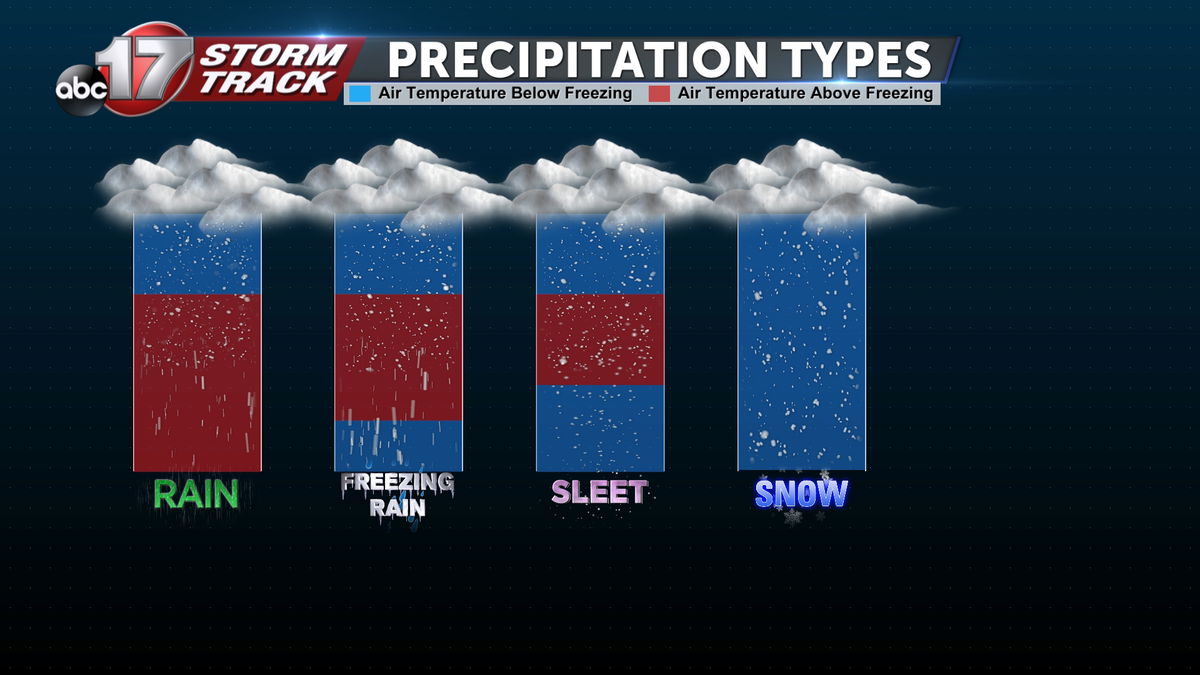Timeline and setup of forecasting winter precipitation
As temperatures continue to drop to near or below freezing, several types of winter precipitation have started to appear in forecasts. Predicting different types of precipitation requires a detailed analysis of the atmosphere from top to bottom and a steady process of increasing confidence.
Precipitation type is determined by the temperature of the atmosphere at all levels where weather occurs. Twice a day (sometimes more in special weather events), the National Weather Service launches weather balloons that travel vertically to the top of the atmosphere and collect weather information. Temperature, dewpoint, winds, and more variables are used to construct a vertical profile of atmospheric conditions.

The temperature change at different heights leads to changes in precipitation as it falls. When the entire atmosphere is nearly all above freezing, rain will fall to the surface. If the air is freezing at the ground and just above, rain will fall and freeze on contact as freezing rain. Sleet occurs when there is only a small layer of warm air in the mid-levels of the atmosphere where precip turns to rain and then refreezes into pellets of sleet at the surface.
Winter precipitation can enter the forecast several days out, but uncertainty grows with time. Generally, the track of a system will start to align within 4 to 5 days of an event. Uncertainty is still possible after this but by day 3 and 2 the type of precipitation becomes more clear. Details on amounts, timing, and impacts come into focus within 2 days of an event in most cases but will still likely change.
There are little chances of winter precipitation impacting Mid-Missouri for the next week but it is always important to remain aware of the forecast.
